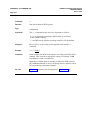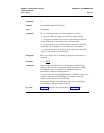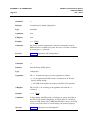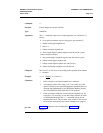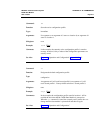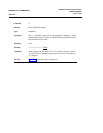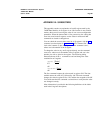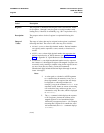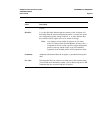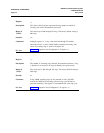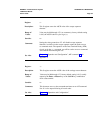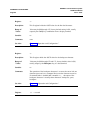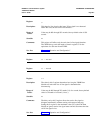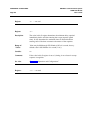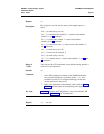
APPENDIX B: S-REGISTERS
DEFINITY Communications System
7400B Data Module
Page B-2
User’s Guide
Label
Description
Register:
The S-register is identified following this label. Note that the names
for S-registers 1 through 9 may be typed as two-digit numbers with
leading zeros, if desired, for readability (e.g., S01 is equivalent to S1).
Description:
The purpose and use for the S-register is explained following this
label.
Range of
The range of values that may be assigned to the register is explained
Values:
following this label. The units for the value may be as follows:
●
●
●
decimal
ASCII
hexadecimal
—a one- to three-digit decimal number. Decimal numbers
are typically used to represent a count, seconds, or fractions of a
second.
—a one- to three-digit decimal number that represents the
decimal equivalent for an ASCII character (see ASCII Character
Table in Appendix D, "Quick-Reference Summaries").
—a two-digit hexadecimal number used to represent
the contents of a bit-mapped S-register. Bit-mapped S-registers are
not usually set by entering a complete value for the register, but are
set one or more bits at a time by various AT commands.
Hexadecimal digits include the decimal digits 0 through 9, and the
letters A through F.
Notes:
1.
A value typed as a decimal or ASCII argument
to a command may be entered as a one, two, or
three digit number, as required, but will always
be displayed as a three digit number (for
example, you type the command ATS0=3 to set
automatic answer feature to answer an incoming
call on the third ring, and then type the AT&V
command to verify the value, which is displayed
as S00:003).
The &V command, which displays the contents
of all S-registers, presents the contents of bit-
mapped registers as two hexadecimal digits
followed by an uppercase letter H (for example,
assuming that S-register S14 contains the value
AA hexadecimal, the AT&V command displays
S14:AAH).
2.
(more)



